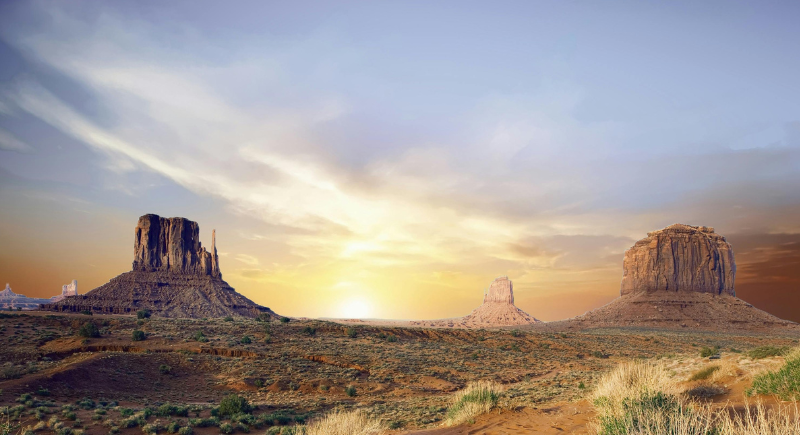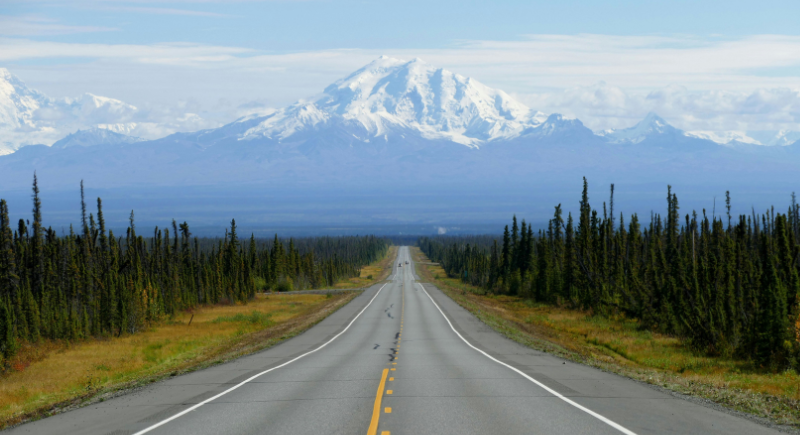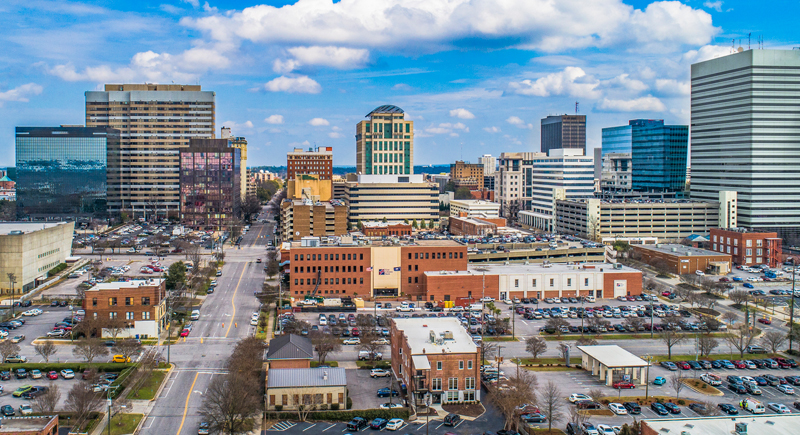14 States Where Natural Disasters Are Becoming Uncommonly Frequent
Can you imagine a country where wildfires rage year-round, hurricanes become a yearly occurrence, and heat waves turn deadly? This isn’t science fiction – it’s the chilling reality for millions of Americans living in a new normal: a landscape increasingly ravaged by natural disasters. Believe it or not, a recent National Oceanic and Atmospheric Administration (NOAA) study found that billion-dollar weather disasters have become twice as common in the U.S. since the 1980s. But where are they hitting hardest? Here’s a sobering look at 14 American states where natural disasters are becoming shockingly frequent. From wildfires scorching coastlines to hurricanes leveling entire communities, these regions are on the front lines of a climate crisis unlike anything we’ve seen before.
California

Credit: Wikimedia Commons
California is known for its sun and surf and is equally famous for its wildfires. However, the state has also seen a stark increase in wildfire frequency, from an annual average of 5,000 in the past to over 8,500 between 2010 and 2020, as reported by the California Department of Forestry and Fire Protection (CAL FIRE). Fueled by prolonged drought, these fires consume thousands of acres and pose a severe risk to the dense populations in these vulnerable areas.
Florida

Credit: unsplash
The Sunshine State is more aptly becoming known for its stormy disposition. According to the National Oceanic and Atmospheric Administration (NOAA), Florida is increasingly threatened by powerful hurricanes and exacerbated coastal flooding due to rising sea levels. These natural forces challenge the state’s infrastructure and call for robust disaster preparedness and response strategies.
Texas

Credit: unsplash
Texas’s climate challenges swing from scorching heat waves to bone-chilling winter storms. The Texas Commission on Environmental Quality (TCEQ) notes an uptick in days surpassing 100 degrees Fahrenheit, and the state still reels from the 2021 winter storm that wreaked havoc, leaving millions without power and billions in damages, illustrating the dire need for diverse climate adaptability.
Louisiana

Credit: unsplash
Hurricanes are an annual menace for Louisiana, especially its coastal areas. Research from Louisiana State University’s Climate Change & Sustainability Initiative in 2021 pointed out that 90% of the state’s coastline is at risk of storm surge flooding, a situation worsened by rising sea levels, pressing the need for innovative coastal management and disaster response solutions.
Oklahoma

Credit: unsplash
Tornado Alley’s heart, Oklahoma, sees more tornadoes per square mile than anywhere else in the U.S., as per National Weather Service (NWS) data. Despite improvements in tornado forecasting, the suddenness and intensity of these events leave little room for error, making advanced warning systems and community preparedness vital.
Colorado

Credit: unsplash
The picturesque state of Colorado faces its own fiery trials with significant increases in wildfire activity. The Colorado Sun highlighted that the state’s ten largest wildfires have all occurred since 2002, a trend highlighting the urgent need for fire management strategies and community safeguarding practices.
Puerto Rico

Credit: unsplash
This Caribbean jewel has faced the wrath of several major hurricanes in recent years, including Irma, Maria, and Fiona. A 2023 report from the Puerto Rico Institute of Statistics chronicles the ongoing recovery challenges, emphasizing the critical need for strengthened infrastructure and resilient rebuilding efforts.
North Carolina

Credit: unsplash
North Carolina’s susceptibility to hurricanes and inland floods is rising, with the Environmental Protection Agency (EPA) noting the state’s vulnerability to sea-level rise. Increased rainfall and frequent flooding are pressing concerns, demanding comprehensive flood management and emergency preparedness plans.
Washington

Credit: unsplash
Wildfires are leaving an indelible mark on Washington state, with the 2022 Bolt Creek Fire setting records for land area burned. As reported by the Seattle Times, these fires challenge emergency services and air quality management, highlighting the need for effective environmental and disaster response strategies.
Arizona

Credit: unsplash
Arizona is getting hotter, and its impact on public health is escalating. The Arizona Department of Health Services (ADHS) in 2022 reported a troubling rise in heat-related deaths, with climate change pushing temperatures to new highs. This trend poses severe risks, particularly to vulnerable groups such as the elderly and economically disadvantaged.
Alaska

Credit: unsplash
Alaska might be known for its icy landscapes, but it’s warming at a concerning pace. NOAA’s 2023 findings reveal that Alaska’s temperature is increasing twice as fast as the global average, leading to glacier melt, rising sea levels, and disrupted ecosystems, which could have profound impacts on local wildlife and industries.
Nebraska

Credit: unsplash
Positioned in the heart of Tornado Alley, Nebraska is frequently visited by these violent storms. Data from the National Severe Storms Laboratory (NSSL) places it among the top states for tornado activity per area, necessitating robust building codes and emergency planning to mitigate the impact on communities.
Hawaii

Credit: unsplash
Paradise faces its share of peril with increasing hurricane intensity and the ever-present possibility of a tsunami, as the University of Hawaii at Manoa’s International Pacific Research Center (IPRC) reported in 2022. These dual threats necessitate ongoing research and preparedness to protect the islands’ unique ecosystems and vibrant communities.
South Carolina

Credit: iStockphoto
South Carolina’s picturesque coastlines are often in the crosshairs of hurricanes, with the South Carolina Emergency Management Division (SCEMD) documenting 15 major hurricanes since 1893. The recurring storms bring not just high winds and rain but also significant flooding and disruptions, emphasizing the need for sustained investment in coastal defenses and community resilience programs.